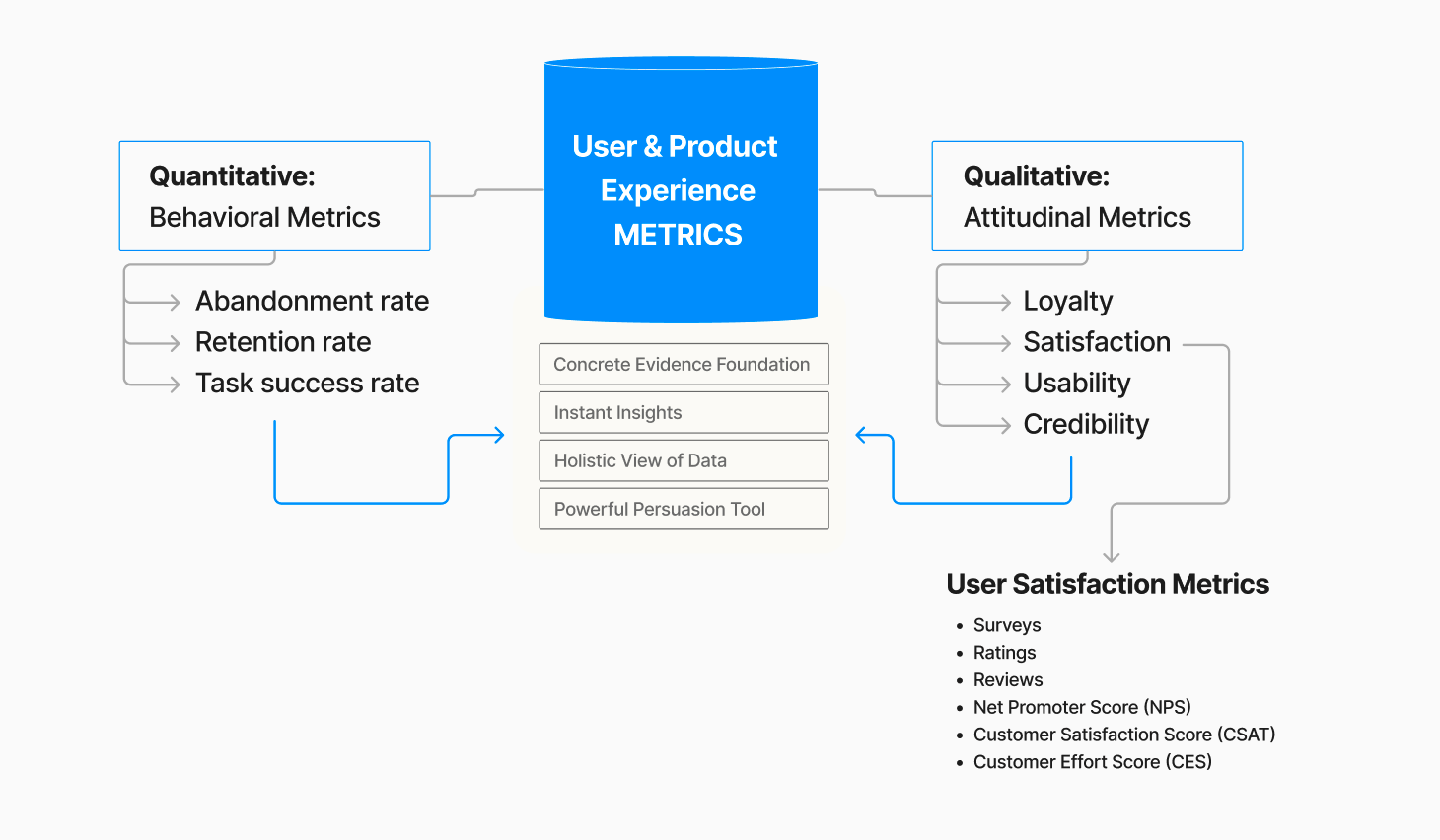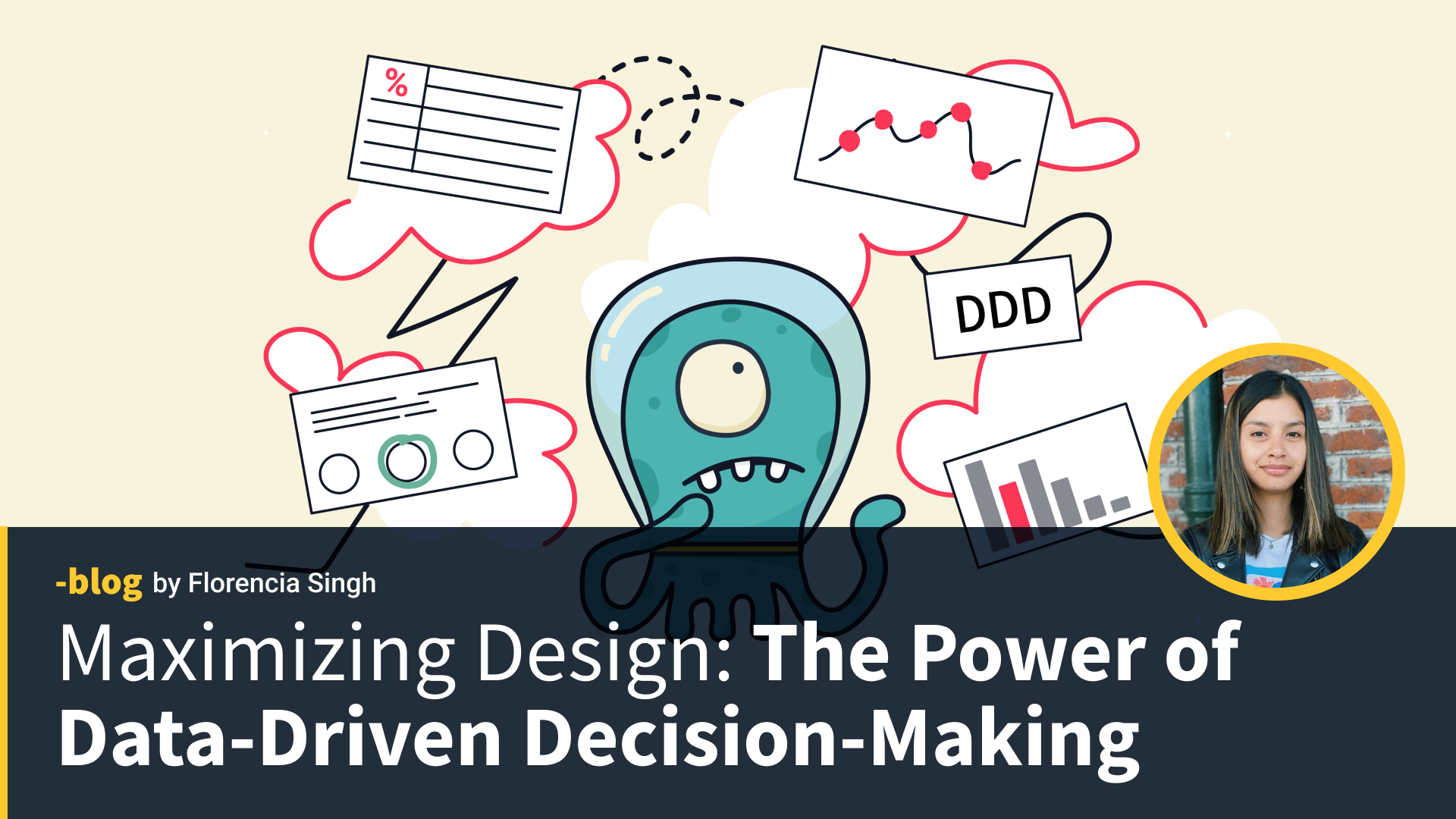In the rapidly evolving digital world, the role of designers has undergone a profound transformation. The era of creating purely aesthetically pleasing interfaces is behind us. Today, designers are adopting a Data-Driven Design (DDD) approach, utilizing empirical evidence to guide their choices. So, can we generate a significant business and product impact without metrics?
The Significance of Measurement
- Foundation on Concrete Evidence: Unlike subjective aesthetic judgments, analytics provide definitive insights, straightforwardly presenting data.
- Instantaneous Insights: Designers can now access accurate reports with just a few clicks, quickly resolving any design-related questions.
- Harmony with Qualitative Analysis: Employing both quantitative and qualitative analyses and integrating their insights is crucial for a holistic view.
- Powerful Persuasive Tool: Analytics offer concrete data, such as percentages and figures, making it easier to present findings to stakeholders in an understandable way.
Understanding Metrics
Metrics not only indicate performance but also business metrics. In a way, they are thermometers of how our flows are doing, how satisfied our users are, what are the associated costs of our processes, etc. Encompassing numbers or percentages that track and assess the evolution of specific aspects over time. For example, they are invaluable for monitoring website traffic, conversion rates, and sales. User Experience (UX) or product experience (PX) metrics are essential for evaluating, comparing, and tracking the user experience of websites or applications. UX metrics fall into two categories:
- Quantitative Behavioral Metrics: Focus on user interactions with your product (e.g., abandonment rate, retention rate, task success rate).
- Qualitative Attitudinal Metrics: Gauge users’ feelings about your product, primarily through feedback (e.g., loyalty, satisfaction, usability, credibility). These metrics are pivotal for assessing and enhancing the quality of user experience over time.

The Critical Role of User Satisfaction Metrics
User satisfaction metrics are key to understanding how users feel about your product. Various methods, including surveys, ratings, reviews, Net Promoter Score (NPS), Customer Satisfaction Score (CSAT), and Customer Effort Score (CES), offer insights into users’ perceptions. They reveal what users enjoy and dislike and how likely they are to recommend your product. These insights are vital for pinpointing improvement opportunities and prioritizing updates.
Advantages of Data-Driven Design
Data-driven design ensures that products meet actual user needs rather than presumed ones. It’s crucial to avoid the pitfalls of launching a product that fails to engage users, lacks essential features, or falls short of expectations. Continuous data analysis highlights successes and shortcomings, fostering the enhancement of concepts and addressing previously unnoticed issues.
Embarking on Data-Driven Design
Integrating data into the design process may seem overwhelming, but it is achievable. Here’s how to begin:
- Implement a Measurement Tool: Essential for gathering data, this step can be as simple as setting up a Google Analytics account and embedding the provided code into your site.
- Identify Key Metrics: With a huge amount of data available, it’s important to concentrate on the metrics that align with your goals and user expectations.
Conclusion: Catalyzing Design Success Through Data
Integrating data-driven decision-making into the design process is now necessary for thriving in the competitive digital marketplace. By leveraging analytics, designers are better equipped to meet user demands, achieve business goals, and stay ahead of trends. Continuous measurement and analysis enable the refinement of designs, optimization of user experiences, and, ultimately, the acceleration of business success. In essence, measuring usability and user experience is not just beneficial but critical for maximizing design impact and securing long-term achievement.
If you are interested in going deeper into the world of metrics and design, you can watch me giving a talk in Spanish for our public talk series on Youtube on the link below!





